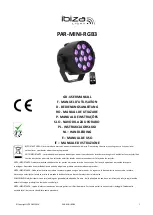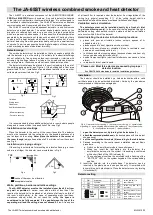
Scientific
SMO1000E
94/185
I2C Triggering
This part introduces the nine kinds of trigger conditions (Start, Stop, Restart, No Ack,
EEPROM, 7 Addr&Data, 10 Addr&Data and Data Length) and the methods of setting
them.
To introduce the trigger conditions
Start Condition
— the oscilloscope will be triggered when SDA signal transitions
from high to low while the SCL clock is high. If it is chosen as the condition of trigger
(including frame triggers), a restart will be treated as a “Start condition”.
Stop Condition
— the oscilloscope will be triggered when SDA transitions from low to
high while the SCL is high.
Restart
— the oscilloscope will be triggered when another “Start condition” occurs
before a “Stop condition”
.
No Ack
— the oscilloscope will be triggered when SDA data is high during any SCL’s
ACK bit.
EEPROM
— the trigger searches for EEPROM control byte (the value is 1010xxx) on
the SDA bus. And there is a Read bit and a ACK bit behind EEPROM. Using
Limit
Range
softkey to set the qualifier and
Data1
softkey to set the data’s value. If
EEPROM’s data is greater(less, equal) than Data1, the oscilloscope will be triggered
at the edge of ACK bit behind Data byte. It’s unnecessary that the Data byte musts
follow the EEPROM.
Содержание SMO1000E
Страница 1: ...Digital oscilloscope SMO1000E User Manual ...
Страница 17: ...Scientific SMO1000E 17 185 Appearance and Dimensions Figure 1 Front View Figure 2 Top View ...
Страница 54: ...Scientific SMO1000E 54 185 Figure 12 x Interpolation Figure 13 Sinx x Interpolation ...
Страница 82: ...Scientific SMO1000E 82 185 Figure 28 Relative Window Trigger ...
Страница 84: ...Scientific SMO1000E 84 185 Figure 29 Interval Trigger ...
Страница 90: ...Scientific SMO1000E 90 185 Universal Knob to select the desired value Figure 33 Pattern Trigger ...
Страница 109: ...Scientific SMO1000E 109 185 Figure 53 UART Trigger ...
















































